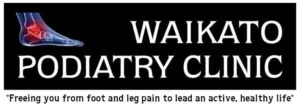Post-Op Infection – Things to Look For
Andrew Jones gives tips for things to look for after nail surgery - what you should be concerned about in terms of a possible infection.
Recognising and Managing Post-Operative Toe Infections
One of the most common concerns patients have during their recovery from nail surgery is whether their healing is progressing normally or if complications are developing. Pain during dressing changes, changes in appearance, or unusual discharge can all cause anxiety about potential infections. This guide will help you understand the difference between normal healing responses and signs that require immediate medical attention.
When Concerns Typically Arise
Most patients begin to worry about their healing progress around the third or fourth dressing change, typically 3-4 days post-surgery. This is when the initial post-operative effects begin to subside, and any developing complications become more apparent.
Common Scenario: You've been diligently changing your dressing daily, but you're experiencing significant pain during the process. The discomfort seems to be getting worse rather than better, and you're concerned that something may not be healing correctly.
Normal vs. Concerning: While some discomfort during dressing changes is expected, escalating pain or new symptoms warrant closer evaluation.
Normal Post-Operative Responses
Understanding what's normal helps you identify when something isn't right:
Expected Inflammation: After phenol matricectomy (a common nail procedure), some redness around the base of the toe is completely normal for 48+ hours. This is your body's natural response to the phenol used to cauterize the nail matrix.
Typical Healing Signs:
- Mild to moderate redness that remains localized
- Some clear to slightly bloody discharge
- Gradual reduction in pain over the first few days
- Swelling that peaks within 24-48 hours and then begins to subside
Early Warning Signs of Infection
Learning to recognize the early signs of infection is crucial for preventing serious complications:
Spreading Redness: While some redness is normal, spreading redness that extends beyond the immediate surgical area is worrisome. This may indicate that bacteria are spreading through the surrounding tissue.
Increased Swelling: Swelling that continues to worsen after the first 48 hours, or swelling that extends significantly beyond the surgical site.
Escalating Pain: Pain that increases rather than decreases over time, or pain that becomes severe and doesn't respond to prescribed pain medication.
Changes in Discharge: Watch for:
- Increased volume of exudate (fluid drainage)
- Thickened or moist discharge
- Change in discharge color (yellow, green, or brown)
- Possible unpleasant odour from the surgical site
The Importance of Daily Monitoring
Daily Photography: Take daily photographs of your surgical site to create a visual record of your healing progress. This documentation serves multiple purposes:
- Objective tracking: Photos provide an objective way to assess whether changes are occurring
- Communication tool: Photos can be sent to your clinician if concerns arise
- Peace of mind: Having a visual record helps you see gradual improvements that might not be obvious day-to-day
When to Seek Immediate Medical Attention
Contact us immediately if you experience:
Systemic Symptoms:
- Fever
- Chills or flu-like symptoms
- Nausea or vomiting
- General feeling of being unwell
Local Symptoms:
- Rapidly spreading redness
- Severe, increasing pain
- Thick, foul-smelling discharge
- Red streaks extending up the leg
- Significant swelling that doesn't improve with elevation
Functional Changes:
- Inability to bear weight on the affected foot
- Numbness or tingling in the toe
- Changes in toe colour (very pale or bluish)
When Pain Indicates Problems
Normal Pain: Should gradually decrease with each dressing change as healing progresses.
Concerning Pain:
- Sharp, severe pain during gentle cleaning
- Pain that seems disproportionate to the procedure
- New areas of tenderness developing
How To Support Healing
Rest and Elevation:
- Keep the affected foot elevated when possible
- Limit unnecessary walking or standing
- Get adequate sleep to support healing
Nutrition and Hydration:
- Maintain good nutrition to support tissue repair
- Stay well-hydrated
- Avoid smoking, which impairs healing
Medication Compliance:
- Take prescribed antibiotics exactly as directed
- Complete the full course even if symptoms improve
- Use pain medication as needed for comfort
Cleanliness:
- Maintain strict hygiene during dressing changes
- Use clean towels and surfaces
- Wash hands thoroughly before and after care
Protection:
- Keep the surgical site dry except during cleaning
- Wear protective footwear when necessary
- Avoid activities that could traumatise the area
Normal Healing Timeline
First Week:
- Gradual reduction in pain and swelling
- Decreased discharge from the surgical site
- Beginning tissue repair
Second Week:
- Continued improvement in comfort
- Stabilisation of the surgical site
- Reduced need for bulky dressings
Beyond Two Weeks:
- Transition to minimal dressing or no dressing
- Return to normal activities as tolerated
- Complete healing of the surgical site
Conclusion
Understanding the difference between normal post-operative healing and signs of infection is crucial for a successful recovery. By maintaining vigilant daily monitoring, documenting changes with photographs, and knowing when to seek help, you can actively participate in your healing process and address any complications quickly.
Remember that some discomfort and inflammation are normal parts of the healing process, but escalating symptoms or signs of infection require immediate attention. Your proactive approach to monitoring and care significantly contributes to achieving the best possible outcome from your nail surgery.

